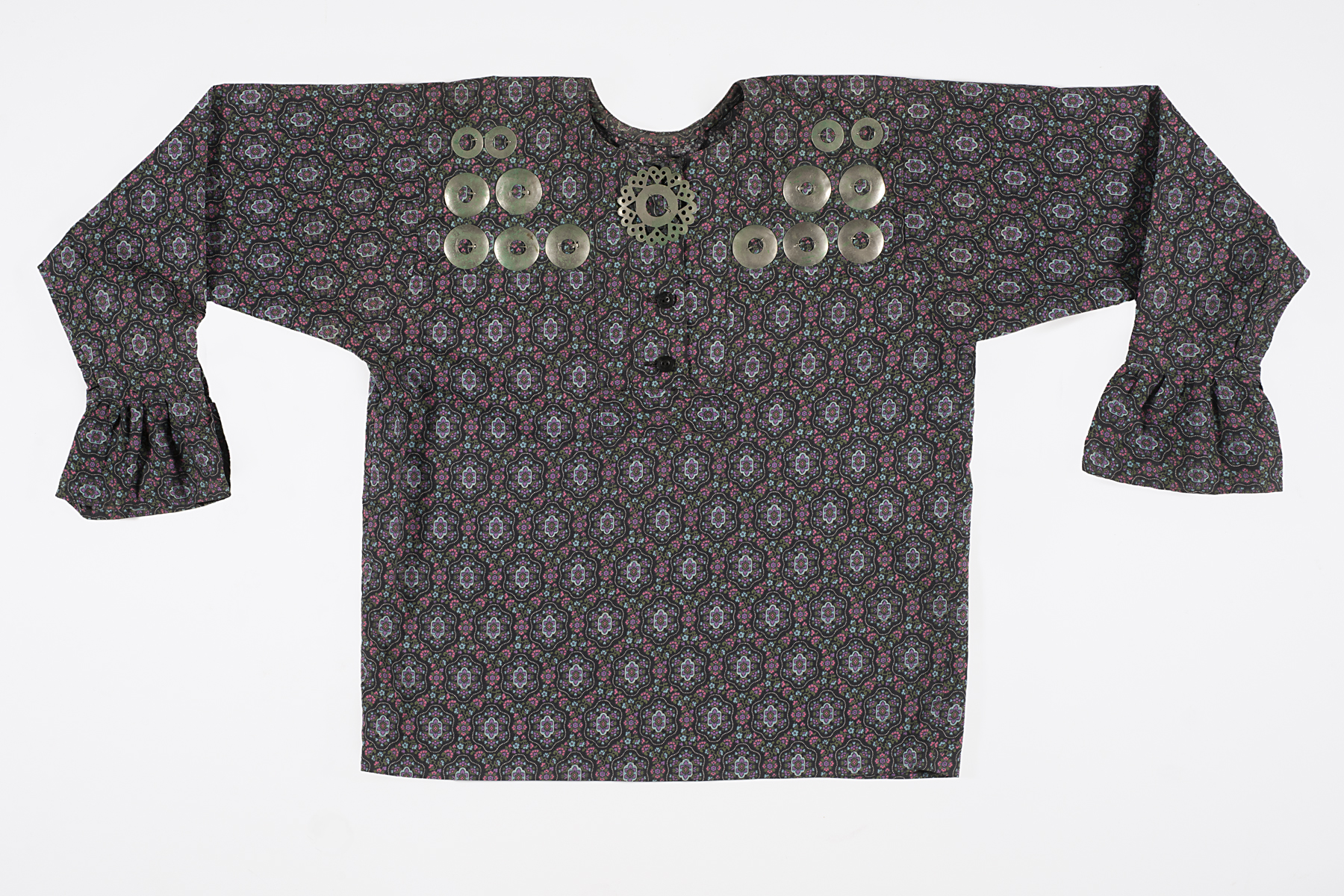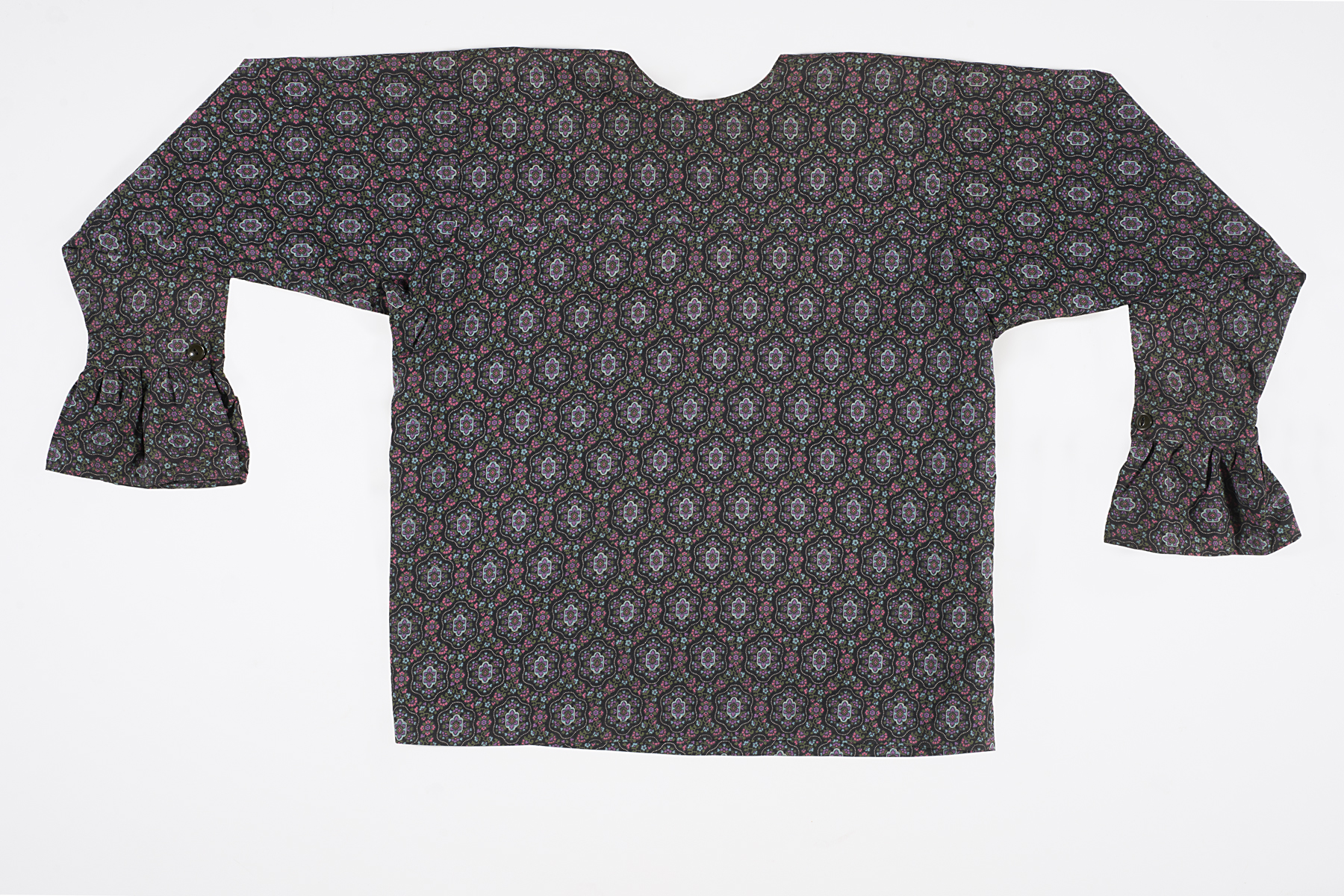blouse, unrecorded Wazhazhe artist
Artwork Overview
blouse,
late 1800s–1910
Where object was made: Pawhuska, Oklahoma, United States
Material/technique: cotton; plastic; nickel silver
Dimensions:
Object Height/Width (Height x Width): 56.5 x 143 cm
Object Height/Width (Height x Width): 22 1/4 x 56 5/16 in
Object Height/Width (Height x Width): 56.5 x 143 cm
Object Height/Width (Height x Width): 22 1/4 x 56 5/16 in
Credit line: Museum purchase: Gift of the Friends of the KUMA
Accession number: 2007.4464
Not on display
If you wish to reproduce this image, please submit an image request



